You are viewing 1 of your 1 free articles
Keeping possession and switching play
| Area | Up to two thirds of pitch |
| Equipment | Balls, bibs, cones, 2 full size goals |
| No. of Players | Up to 16 players + 2 goalkeepers |
| Session Time | Possession game: 20 minutes 9v7 game: 20 minutes |
This is a possession game that we like to run, as it rehearses the players in transferring the ball and switching play when we have the opportunity.
The players like this session because there’s nothing really too complicated about it and it reinforces aspects of how we like to play. When we haven’t got the ball, we like to be nice and compact and try to win it back as quickly as possible, but when we do have the ball we like to make the pitch big and try to keep possession by transferring the ball to the opposite side of the pitch with one of our wide players always maintaining width to receive.
How often we run this session would really depend on how well we’re playing and what topics we’re looking at week to week. After a match, we would usually watch the game back and have a chat about what we need to work on. If we feel like we haven’t switched the ball enough, or if we feel our wide players haven’t been in the right areas to receive the switch, then we would look to do this session to remind the players of our principles.
We would run this session as and when we it is appropriate, rather than running it once a week or once a month.
“When we have the ball we like to make the pitch big and try to keep possession by transferring it to the opposite side”
POSSESSION GAME
We would start the session with a passing drill [not shown] that would build up from short passes to longer 20-yard passes. This would focus players on the topic of the day and prepare them for the following activities, where we want them to switch the ball as much as possible.
For the possession game, we set up a playing area between the 18-yard line and the halfway line, using the full width of the pitch. A red cone gate is positioned in the centre of the area and two angled blue cone gates are positioned on each flank. Green cones are positioned on the four corners of the central playing zone as visual cues for the defenders and attackers.
Playing numbers can vary but here we’re using 16 players, split into two teams of eight. The red team starts in possession and they are the attackers, while the blue team start as the defenders and they must try to win the ball, as shown [1a].
[1a]
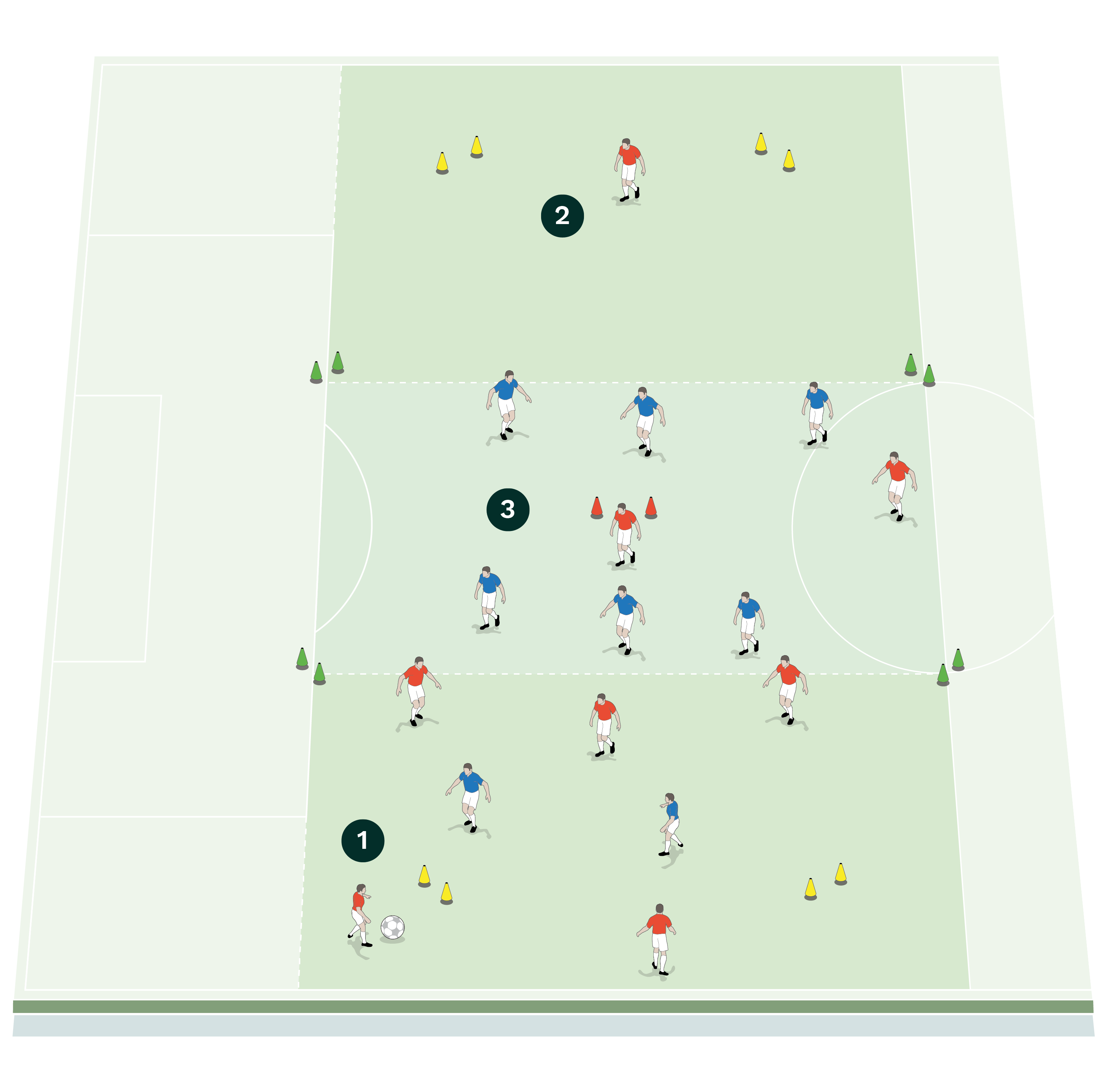
2. The reds must always keep a player wide on the opposite side of the pitch to the ball
3. The blues start as defenders. They must stay compact and try to win the ball, keeping players in either the central zone or in the wide zone containing the ball
“The attackers should create width and must always keep a player wide on the opposite side of the pitch to the ball”
[1b]
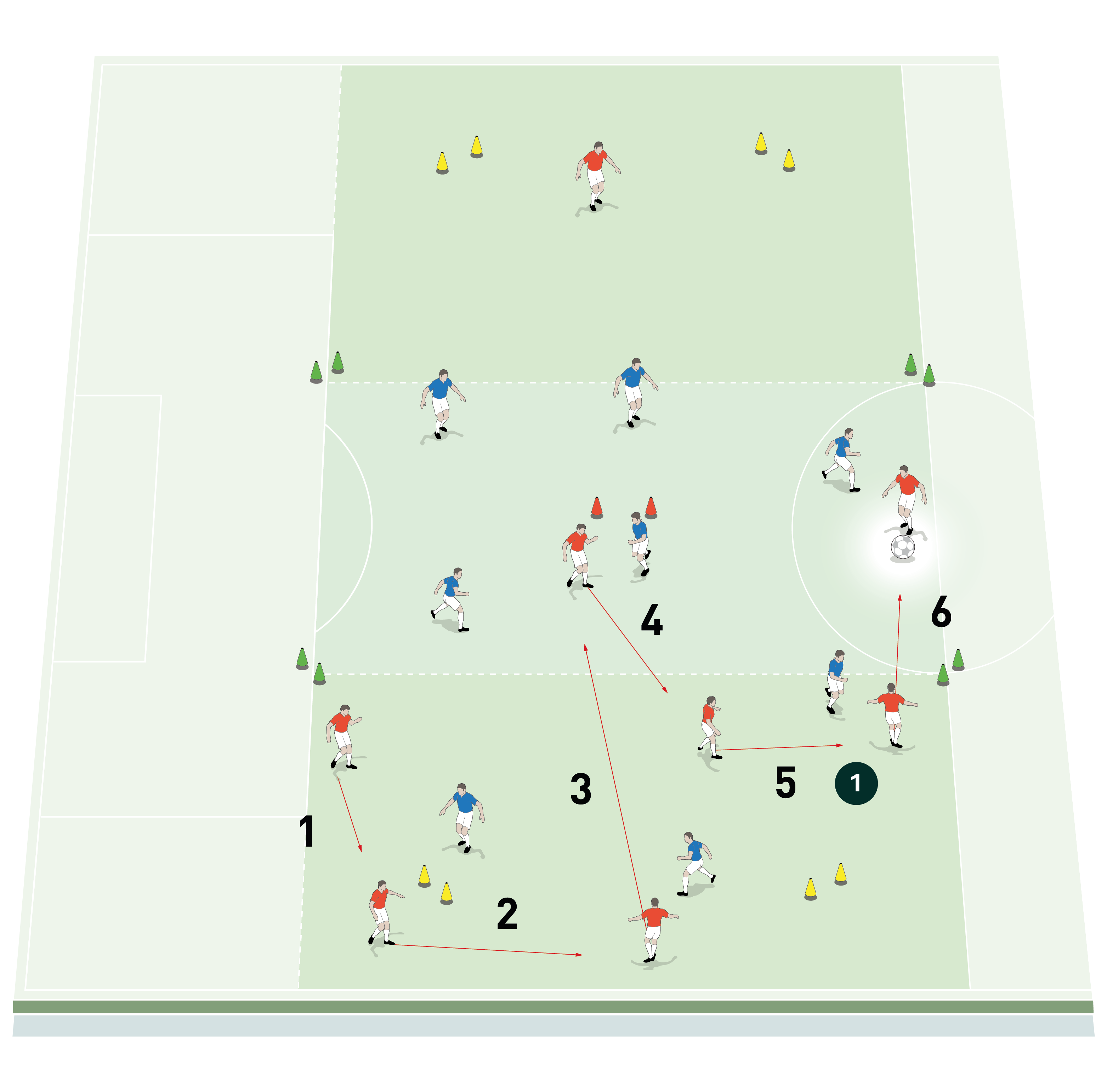
[1c]
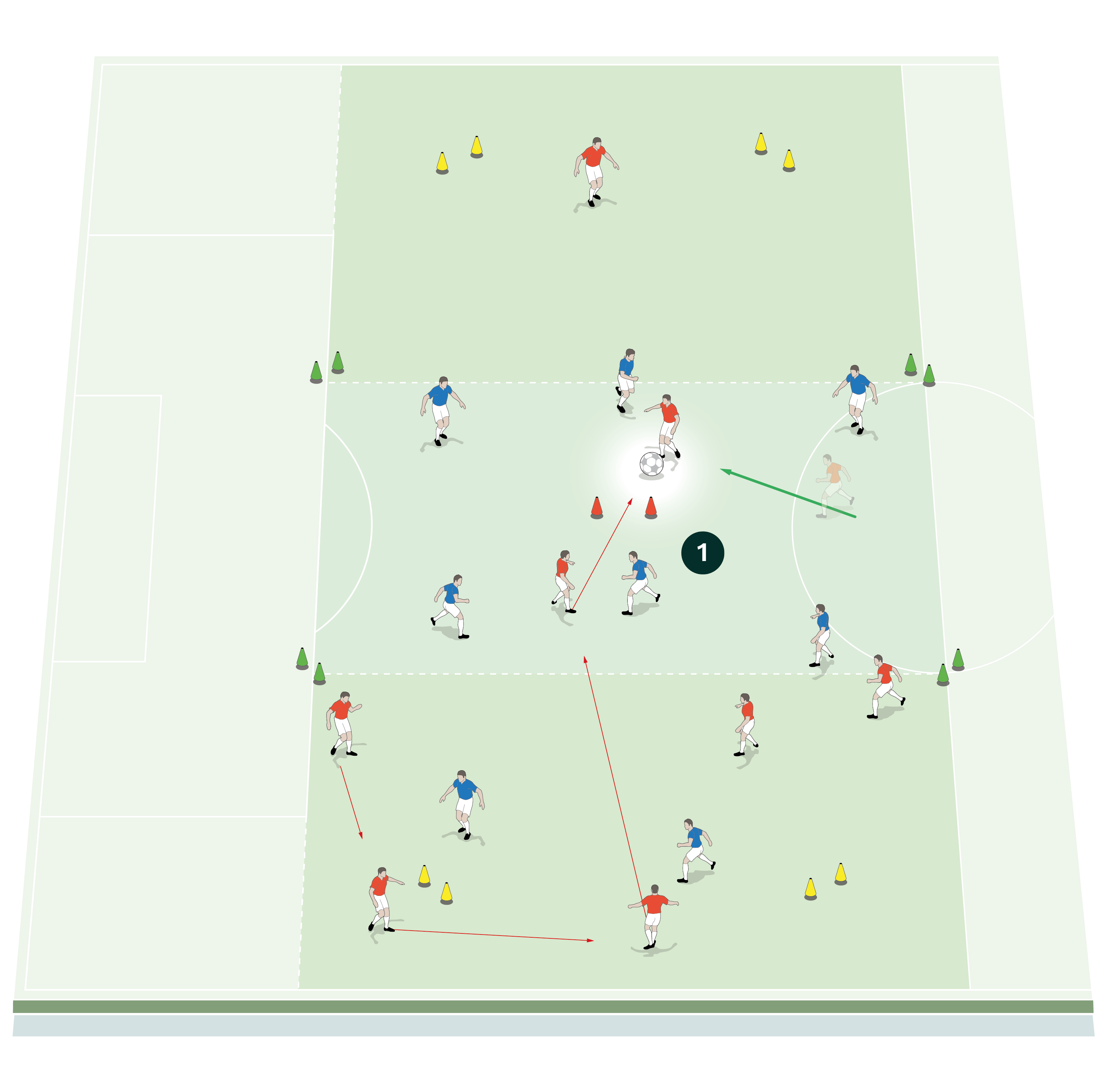
We play an 8v8 game and there are three ways for the possession team to score. Making six consecutive passes scores a point, as shown [1b]. Passing through the red central cones to a team mate scores two points, as shown [1c]. Also, dribbling through the blue cone gates on the wing scores a point.
The attackers should create width and must always keep a player wide on the opposite side of the pitch to the ball, so he is available to receive the switch, as shown [1d].
The defenders must stay compact and players should remain in either the central zone or in the wide zone containing the ball. They must not enter the wide zone furthest from the ball when the opposition are in possession on the near side of the pitch. When the ball is switched, the players must react quickly and move to the opposite side of the green cones to the red winger who made the switch, as shown [1e], leaving that winger free to receive a switch of play himself as the game progresses.
[1d]
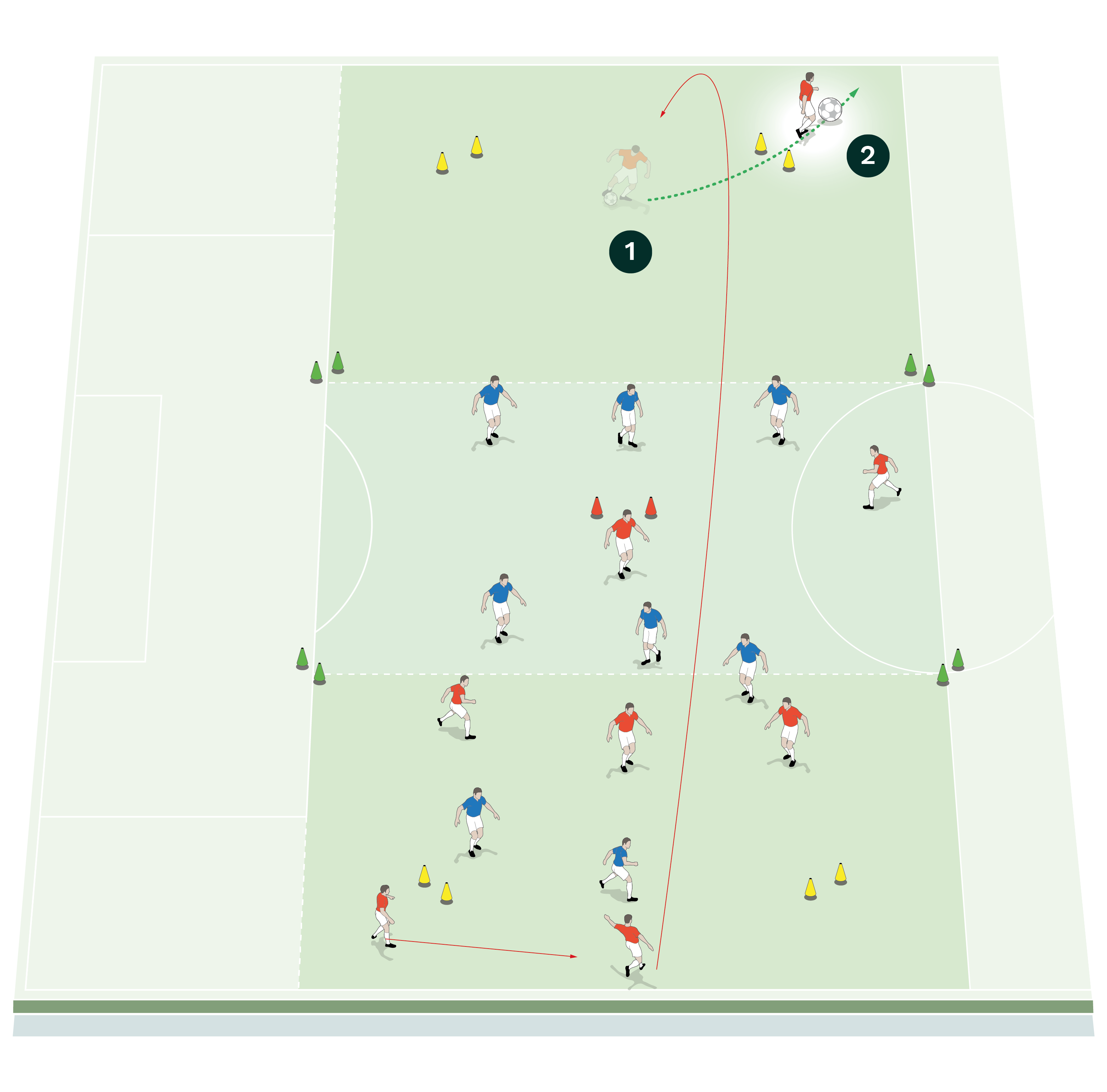
2. Here the red wide player receives the switch and dribbles through the yellow cone gate on the wing to score a point
[1e]
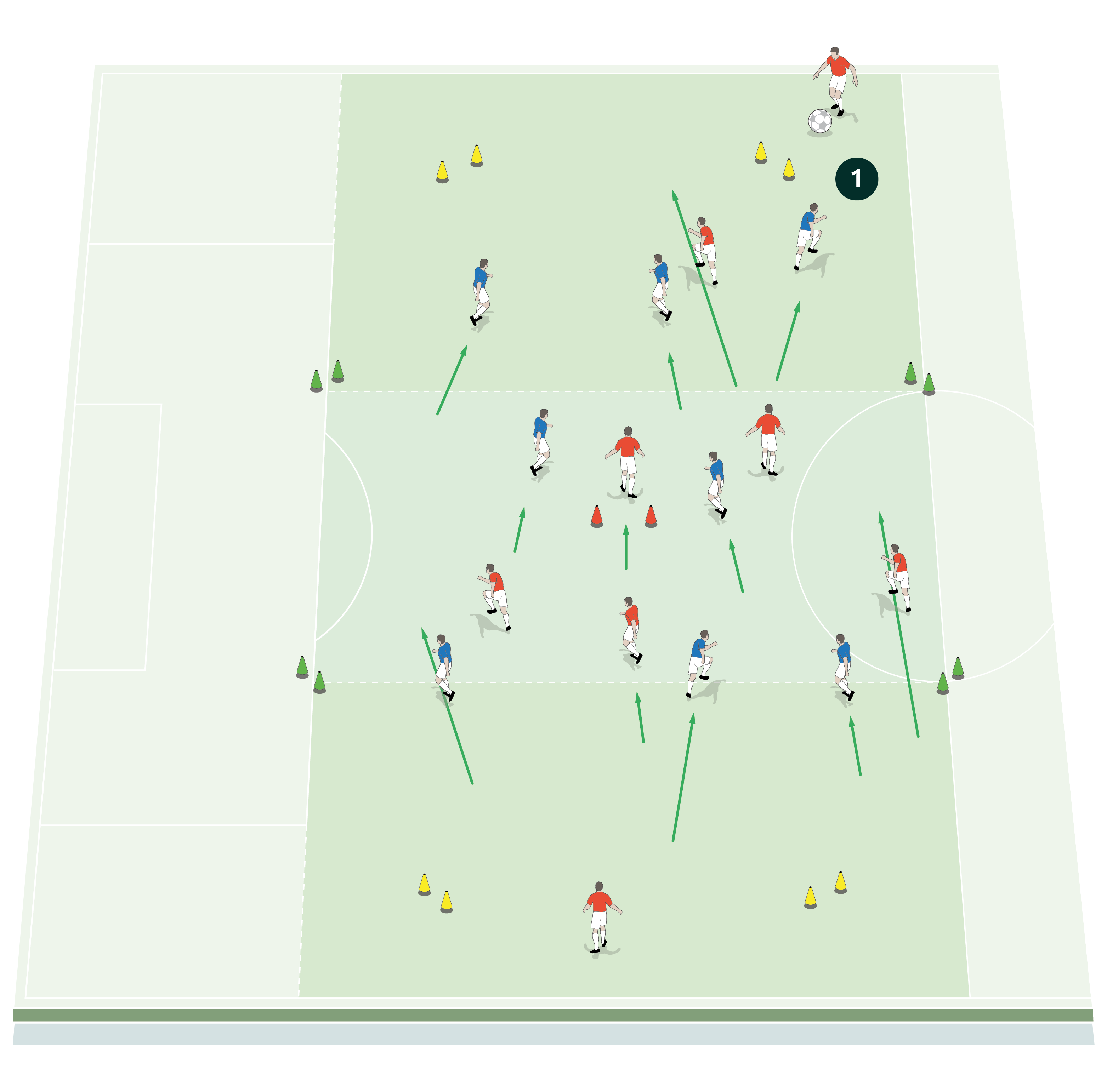
9v7 GAME
[2a]
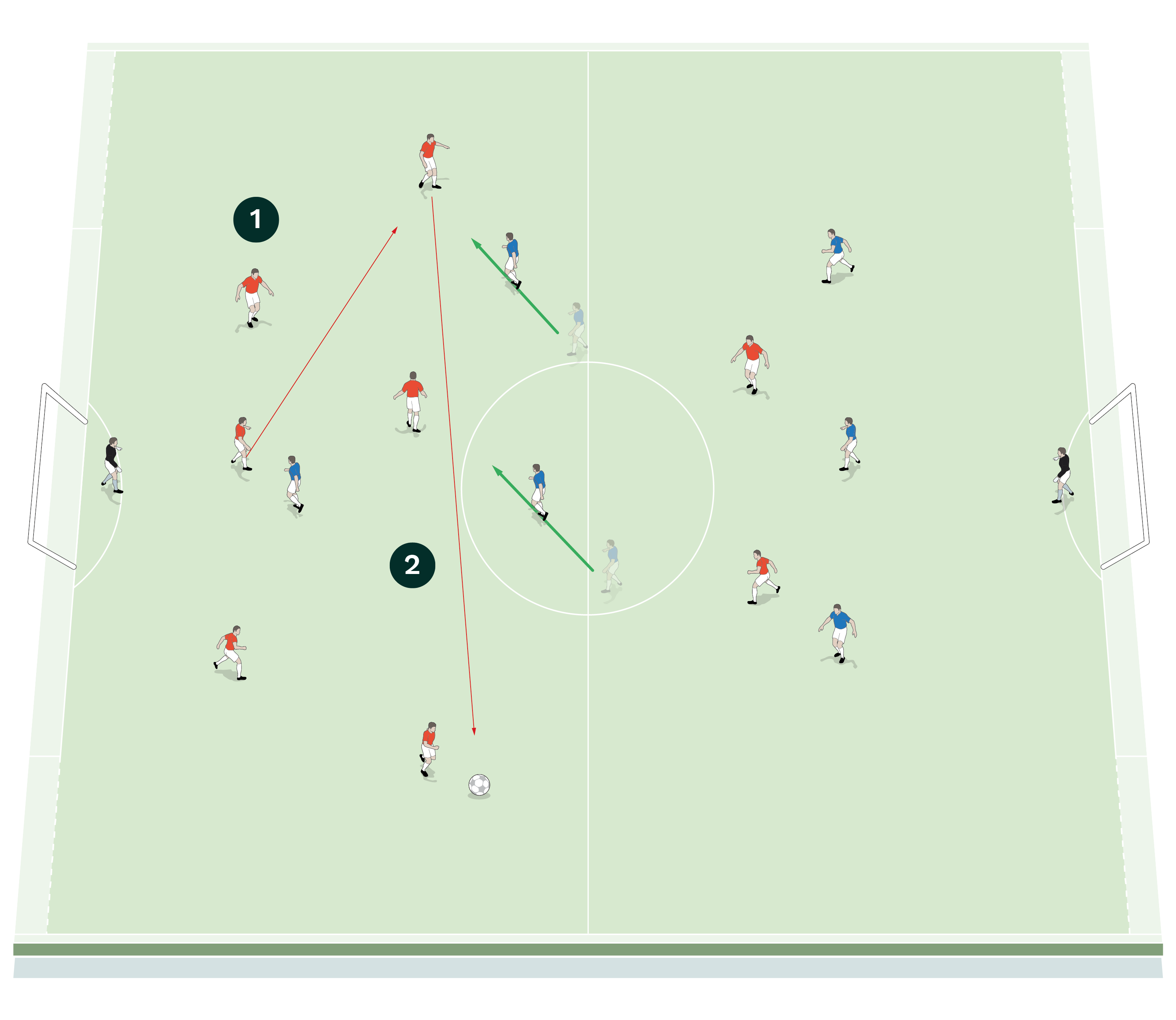
2. The red attacking team should be encouraged to use their overload to create width and switch the play
“We want to see attacking players moving the ball quickly in tight areas, but they must always be aware of switching play”
[2b]
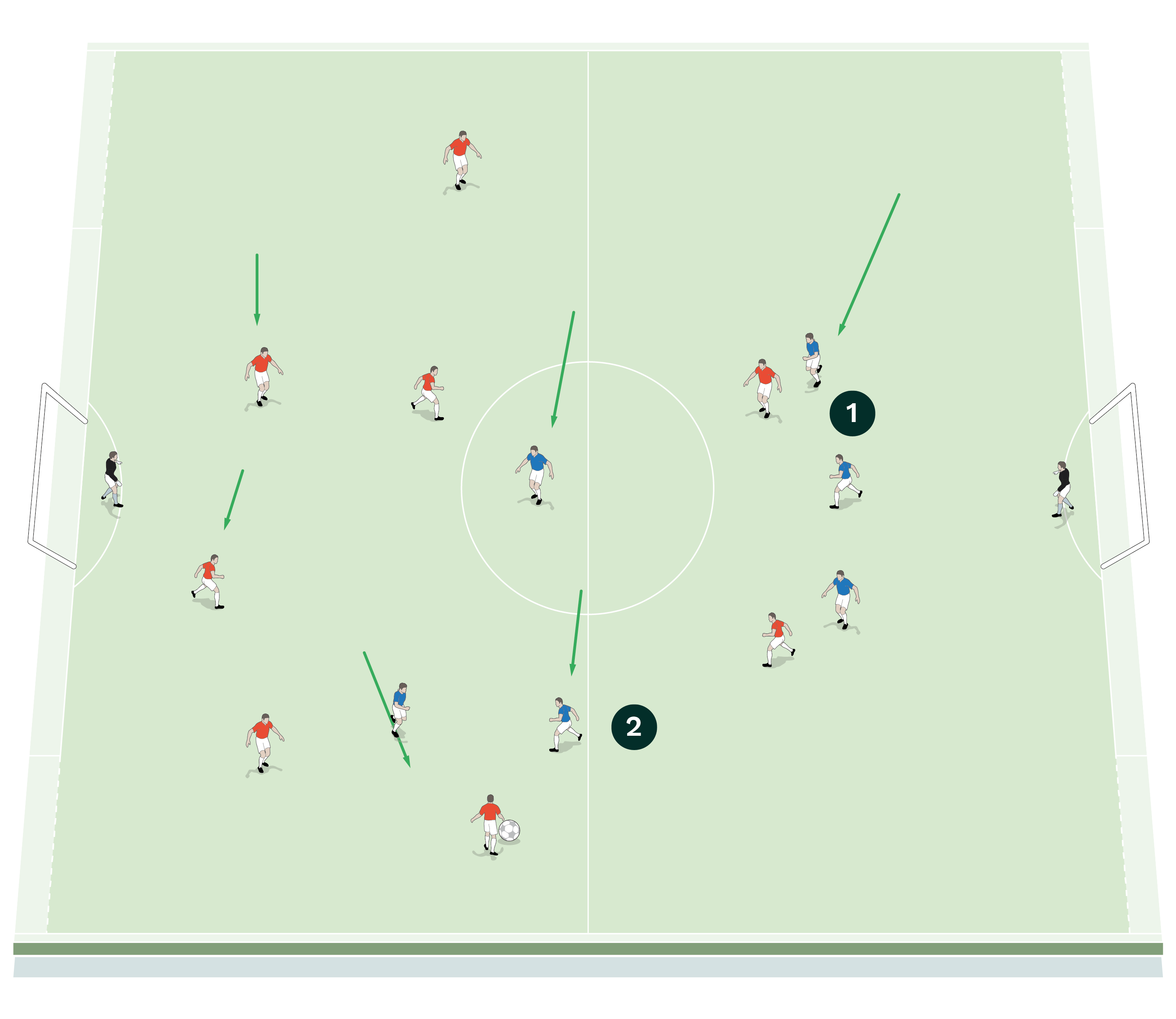
2. As the play is switched, the blues should be encouraged to move across towards the ball
We set up a playing area between the penalty areas of the pitch, with a goal and a goalkeeper at each end. We’re using 14 outfield players split into a red attacking team of nine including the keeper and a blue defending team of seven including the keeper. The same playing principles are applied and the red attacking team should be encouraged to use their overload to create width and switch the play, as shown [2a].
The blue defending team are outnumbered and must stay compact. As the ball moves, they move to cover the ball, replicating the movements worked on in the first exercise, as shown [2b].
We want to see the attacking players moving the ball quickly in tight areas, but they must always be aware of switching play out into areas where we think we have players that are really good at driving with the ball and can threaten in 1v1 situations. Obviously, the wide players can try and score themselves or they can put good balls into the goalmouth area for forwards and midfield players to exploit with late runs.
Related Files
Editor's Picks
Using the goalkeeper in build-up play
Pressing principles
Intensive boxes drill with goals
Penetrating the final third
Creating and finishing
My philosophy
Pressing initiation
Compact team movement
Defensive organisation
Coaches' Testimonials

Alan Pardew

Arsène Wenger

Brendan Rodgers

Carlos Carvalhal

José Mourinho

Jürgen Klopp

Pep Guardiola

Roy Hodgson

Sir Alex Ferguson

Steven Gerrard
Coaches' Testimonials

Gerald Kearney, Downtown Las Vegas Soccer Club

Paul Butler, Florida, USA

Rick Shields, Springboro, USA

Tony Green, Pierrefonds Titans, Quebec, Canada
Join the world's leading coaches and managers and discover for yourself one of the best kept secrets in coaching. No other training tool on the planet is written or read by the calibre of names you’ll find in Elite Soccer.
In a recent survey 92% of subscribers said Elite Soccer makes them more confident, 89% said it makes them a more effective coach and 91% said it makes them more inspired.
Get Monthly Inspiration
All the latest techniques and approaches
Since 2010 Elite Soccer has given subscribers exclusive insight into the training ground practices of the world’s best coaches. Published in partnership with the League Managers Association we have unparalleled access to the leading lights in the English leagues, as well as a host of international managers.
Elite Soccer exclusively features sessions written by the coaches themselves. There are no observed sessions and no sessions “in the style of”, just first-hand advice delivered direct to you from the coach.









